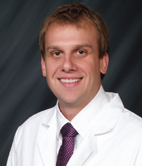
Bringing Communities Together to Improve Care Transitions
By Devon Zoller, MD
Associate Chief Medical Officer, Transitional Care
Sound Physicians
Original Publish Date: December 6, 2016
Ensuring patients make safe transitions as they leave the hospital is a community responsibility. Care transitions, when well-managed, can result in improved quality outcomes, greater patient satisfaction and fewer avoidable hospital readmissions. It’s rare to find a community with a comprehensive strategy to address the entire acute episode of care – from the time a patient arrives in the hospital through 90 days following discharge.
Hospitalists typically provide care from the time a patient is admitted to the hospital through the day of their discharge. Many hospitalist teams rely on others to manage post-discharge care transitions, leaving plenty of opportunities for care plans to fail. Poor transitions can lead to patients bouncing back to the hospital. However, with well-coordinated transitions of care, starting with an appropriate next site of care management plan, it is possible anticipate simple and timely interventions that can be addressed in the 90 days following discharge and avoiding unnecessary hospital readmissions for many at-risk patients.
Our physician group, with more than 2,000 hospitalist providers (Sound Physicians), established a Transitional Care team to serve the needs of communities around the country. This new model coordinates care delivered by the hospitalist team, the patient’s primary care provider, hospital case management, post-acute centers (home health, skilled nursing and rehab agencies), and other community groups to create an end-to-end care management plan for the acute care phase and the 90 days following discharge from the hospital.
We implemented this new care model at Good Samaritan Hospital in Puyallup, Washington, part of the MultiCare Health System and in several other communities around the country over the past 24 months. The primary goal of all our Transitional Care teams is to enable the patients to return home with the proper follow up and support whenever possible. Our team includes a Transitional Care RN at each hospital who serves as a liaison between the hospitalist team, case management, community groups, patients and their families. The hospitalist providers work with the Transitional Care RN and others to evaluate the plans for next site of care for each patient. If the patient requires specialized care at a skilled nursing facility or rehab center, the Transitional Care RN and hospitalists establish relationships and expectations with the centers to ensure their patients get the right care. Each team also has a Regional Medical Director and a Market Manager who oversee clinical and operational aspects of the programs in the community.
Planning for discharge begins at the onset of admission, triggering discussions about the most appropriate next site of care starting with assessing the possibility of going directly home. Adding these specialized team members to focus on the transition between the hospital and home or skilled nursing is proving to be a critical factor in the success of the program. And, effective communication between the entire care team is essential. The operational team works with community services and skilled nursing facilities, ensuring facilities meet the quality standards for care and outcomes.
Educating providers about their role in transitional care and giving them skills to help patients define their goals of care, particularly around the end of life discussions is pivotal to the success of transitional care. Partnering with educators in palliative care, Sound Physicians worked with the CORE Healthcare Consulting Group to develop goals of care educational modules for providers. The video modules, created by physicians and nurses, provides coaching and practical tools to ensure the goals of care conversations are effective when confronted with communicating difficult news to patients with serious or advanced illness (view one of the modules here). Giving providers the tools necessary to improve their conversations with patients and families is leading to more successful care transitions.
Bringing members of the community together to engage in a common understanding for transitions of care is an important piece of the puzzle often overlooked. In heightening collaboration in local communities it is possible to improve transitions to skilled nursing, home health, and palliative care and hospice, based on individual patient’s needs.